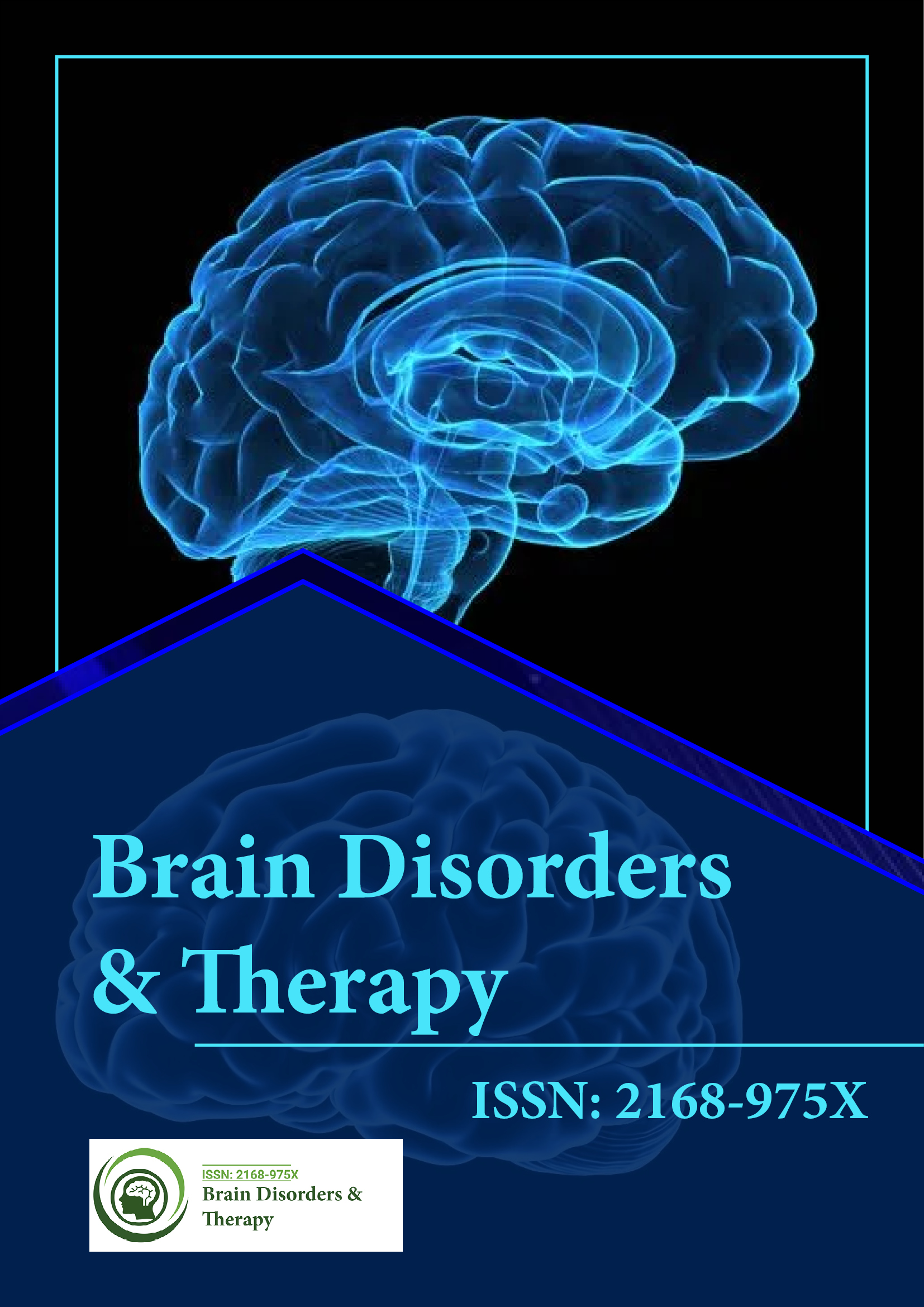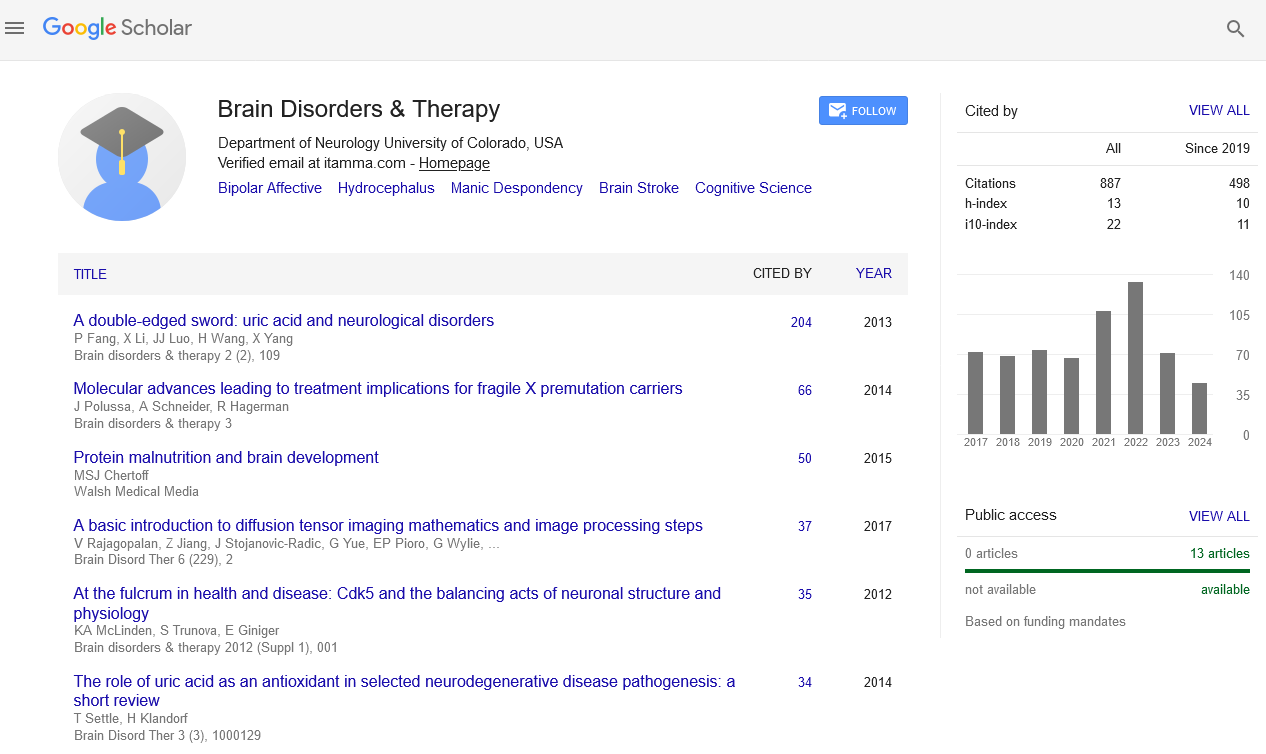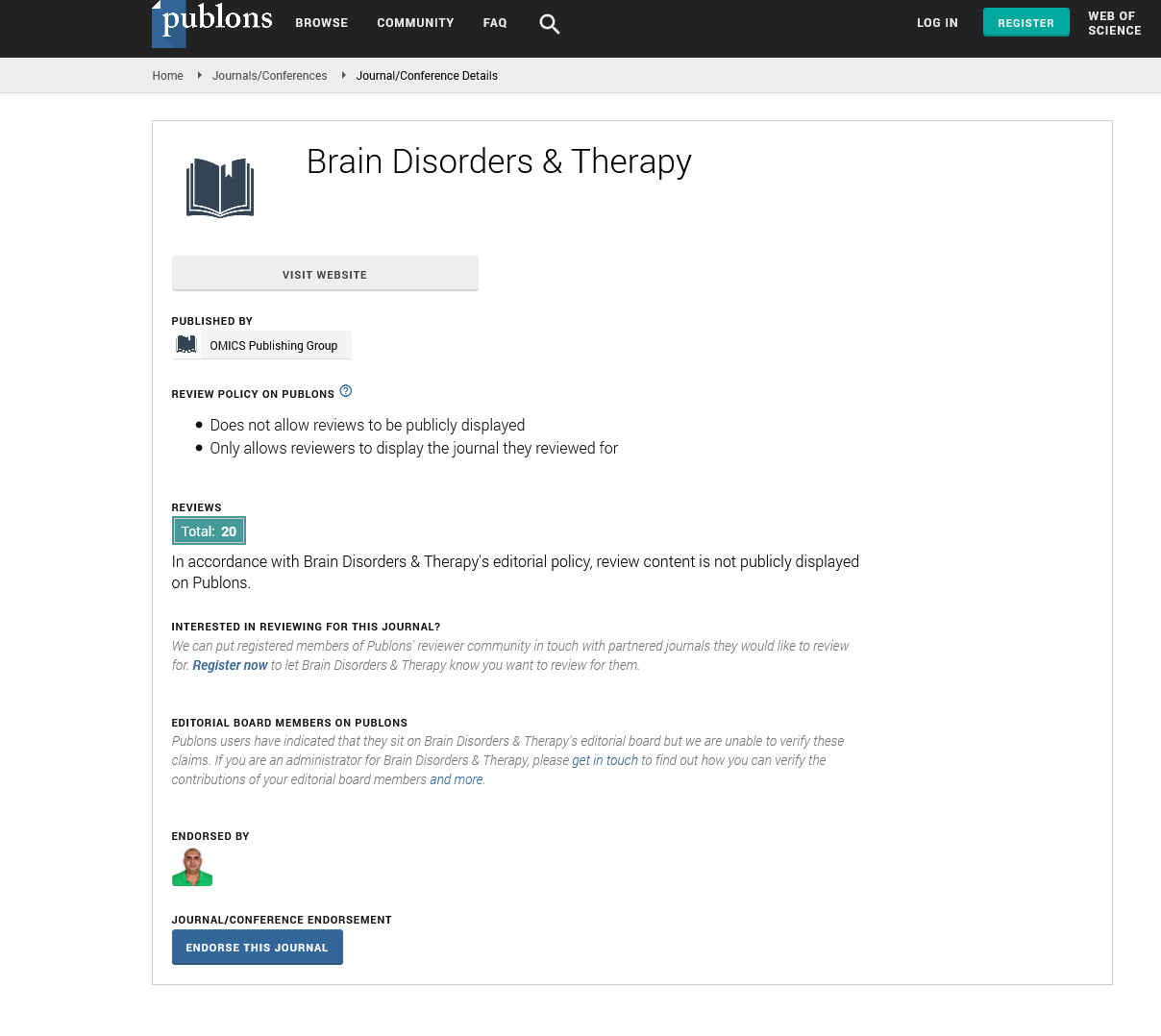Indexed In
- Open J Gate
- Genamics JournalSeek
- JournalTOCs
- RefSeek
- Hamdard University
- EBSCO A-Z
- OCLC- WorldCat
- Publons
- Geneva Foundation for Medical Education and Research
Useful Links
Share This Page
Journal Flyer

Open Access Journals
- Agri and Aquaculture
- Biochemistry
- Bioinformatics & Systems Biology
- Business & Management
- Chemistry
- Clinical Sciences
- Engineering
- Food & Nutrition
- General Science
- Genetics & Molecular Biology
- Immunology & Microbiology
- Medical Sciences
- Neuroscience & Psychology
- Nursing & Health Care
- Pharmaceutical Sciences
Commentary - (2025) Volume 14, Issue 1
Functional Connectivity Biomarkers in the Study of Childhood Trauma
Ahmed Tarek*Received: 19-Feb-2025, Manuscript No. BDT-25-28918; Editor assigned: 21-Feb-2025, Pre QC No. BDT-25-28918 (PQ); Reviewed: 07-Mar-2025, QC No. BDT-25-28918; Revised: 14-Mar-2025, Manuscript No. BDT-25-28918 (R); Published: 21-Mar-2025, DOI: 10.35248/2168-975X.25.14.295
Description
Childhood trauma exerts a lasting influence on brain development, psychological functioning and vulnerability to mental illness. Over the past decade, neuroimaging studies have increasingly focused on how early adverse experiences reshape intrinsic brain connectivity referring to the brain’s baseline functional interactions observed during rest. While this research area has made remarkable progress, it is time to consider both its potential and its limitations as we move toward applying neurobiological markers of trauma in clinical settings.
Recent findings suggest that individuals with a history of childhood trauma exhibit altered functional connectivity within and between core brain networks such as the Default Mode Network (DMN), Salience Network (SN) and Frontoparietal Network (FPN). For example, decreased connectivity within the DMN has been associated with dissociation and impaired self-referential processing, while hyperconnectivity between the SN and amygdala is frequently linked to hypervigilance and threat sensitivity. These observations are critical, as they suggest that intrinsic connectivity patterns may encode signatures of trauma and provide objective, quantifiable correlates of subjective adversity.
Beyond group-level differences, the use of machine learning and multivariate pattern recognition methods has enabled researchers to identify specific connectivity profiles that predict individual differences in trauma exposure and symptom severity. These approaches move beyond traditional case-control comparisons and open the door to personalized assessments. In some studies, patterns of dysconnectivity have successfully distinguished trauma-exposed individuals from controls with over 80% accuracy supporting the feasibility of using intrinsic connectivity as a biomarker.
However, several challenges remain before this approach can be reliably translated into clinical or diagnostic tools. First, the heterogeneity of childhood trauma including variations in type, duration, age of onset and context complicates the interpretation of neural findings. Physical abuse, emotional neglect and sexual trauma may lead to different neural adaptations. Moreover, comorbid psychiatric symptoms (e.g., depression, PTSD, dissociation) often coexist and confound interpretations, making it difficult to isolate trauma-specific neural signatures.
Second, the developmental timing of trauma exposure must be considered. Brain connectivity is highly dynamic across childhood and adolescence and trauma-induced changes may interact with these normative trajectories. For instance, early-life trauma may accelerate or delay maturation of certain circuits, depending on developmental stage and individual resilience factors. Cross-sectional studies provide a limited snapshot and may overlook these nuanced temporal patterns. Longitudinal research is essential to map how brain connectivity evolves over time in trauma-exposed populations.
Another limitation lies in the influence of methodological variability. Differences in imaging protocols, preprocessing pipelines and parcellation schemes can affect connectivity measurements and limit reproducibility across studies. To overcome this, the field must prioritize data harmonization, open sharing and standardized reporting. Only then can robust, generalizable models be developed for clinical use.
Despite these limitations, the characterization of intrinsic brain connectivity patterns provides a unique opportunity to integrate neurobiological data into trauma research and care. It enables the identification of latent neurocognitive phenotypes that may not be apparent through behavioral or clinical assessments alone. Such profiles could aid in early identification of at-risk youth, inform prognosis, or guide intervention strategies tailored to individual neurobiological vulnerabilities.
It is also worth noting that intrinsic connectivity changes are potentially modifiable. Interventions such as trauma-focused cognitive behavioral therapy, mindfulness training and even neuromodulation (e.g., transcranial magnetic stimulation) may reverse or normalize disrupted connectivity patterns. This plasticity reinforces the value of neuroimaging as both a diagnostic and treatment-monitoring tool.
In conclusion, while characterizing childhood trauma based on intrinsic brain connectivity remains a developing field, its conceptual and clinical implications are significant. The shift toward individual-level analyses and multimodal approaches that integrate functional connectivity, structural imaging and behavioral data is potential. However, ethical considerations around privacy, stigma and the responsible use of neuroimaging data must also accompany these scientific advances.
Citation: Tarek A (2025). Functional Connectivity Biomarkers in the Study of Childhood Trauma. Brain Disord Ther. 14:295.
Copyright: © 2025 Tarek A. This is an open access article distributed under the terms of the Creative Commons Attribution License, which permits unrestricted use, distribution, and reproduction in any medium, provided the original author and source are credited.


